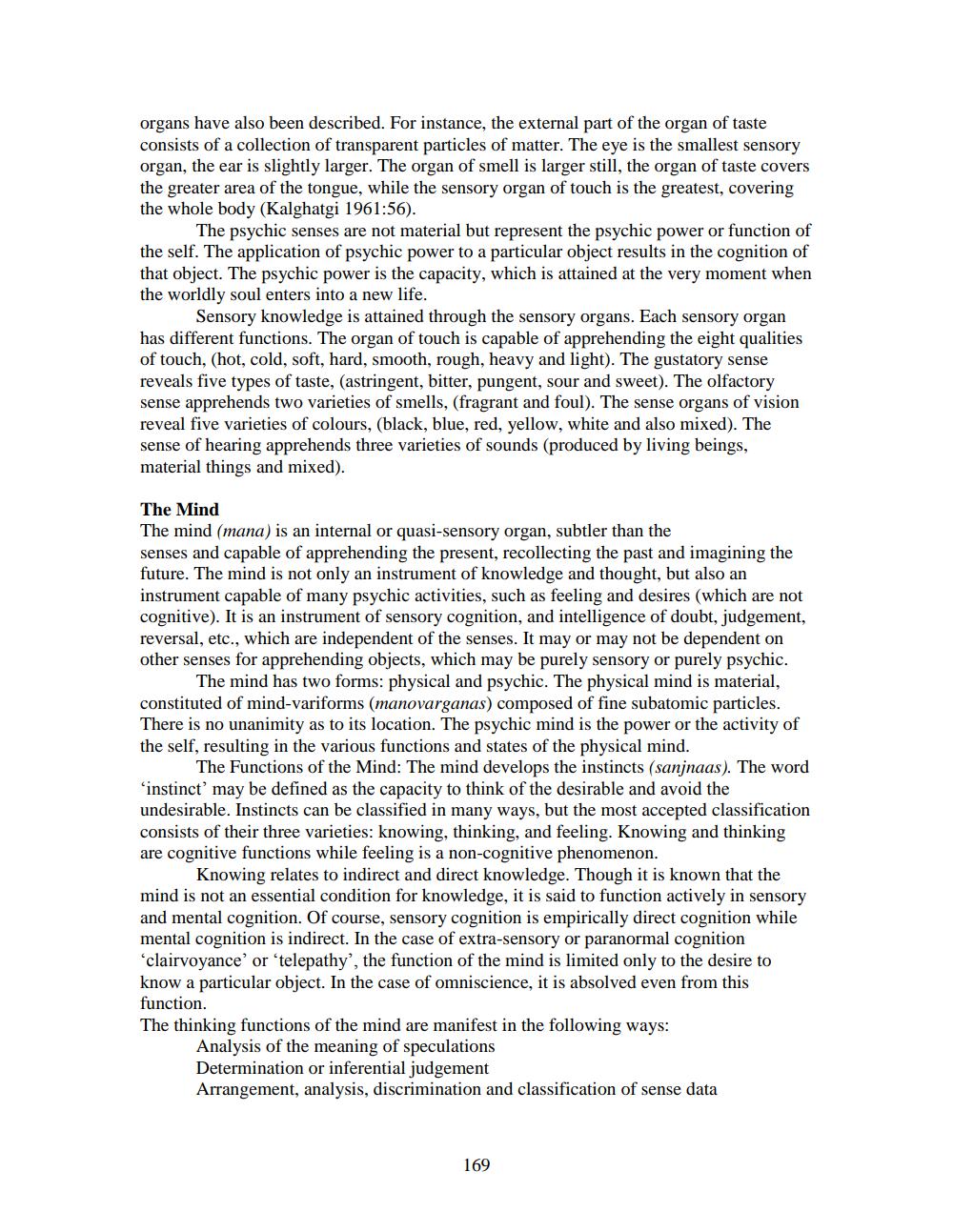________________
organs have also been described. For instance, the external part of the organ of taste consists of a collection of transparent particles of matter. The eye is the smallest sensory organ, the ear is slightly larger. The organ of smell is larger still, the organ of taste covers the greater area of the tongue, while the sensory organ of touch is the greatest, covering the whole body (Kalghatgi 1961:56).
The psychic senses are not material but represent the psychic power or function of the self. The application of psychic power to a particular object results in the cognition of that object. The psychic power is the capacity, which is attained at the very moment when the worldly soul enters into a new life.
Sensory knowledge is attained through the sensory organs. Each sensory organ has different functions. The organ of touch is capable of apprehending the eight qualities of touch, (hot, cold, soft, hard, smooth, rough, heavy and light). The gustatory sense reveals five types of taste, (astringent, bitter, pungent, sour and sweet). The olfactory sense apprehends two varieties of smells, (fragrant and foul). The sense organs of vision reveal five varieties of colours, (black, blue, red, yellow, white and also mixed). The sense of hearing apprehends three varieties of sounds (produced by living beings, material things and mixed).
The Mind The mind (mana) is an internal or quasi-sensory organ, subtler than the senses and capable of apprehending the present, recollecting the past and imagining the future. The mind is not only an instrument of knowledge and thought, but also an instrument capable of many psychic activities, such as feeling and desires (which are not cognitive). It is an instrument of sensory cognition, and intelligence of doubt, judgement, reversal, etc., which are independent of the senses. It may or may not be dependent on other senses for apprehending objects, which may be purely sensory or purely psychic.
The mind has two forms: physical and psychic. The physical mind is material, constituted of mind-variforms (manovarganas) composed of fine subatomic particles. There is no unanimity as to its location. The psychic mind is the power or the activity of the self, resulting in the various functions and states of the physical mind.
The Functions of the Mind: The mind develops the instincts (sanjnaas). The word 'instinct' may be defined as the capacity to think of the desirable and avoid the undesirable. Instincts can be classified in many ways, but the most accepted classification consists of their three varieties: knowing, thinking, and feeling. Knowing and thinking are cognitive functions while feeling is a non-cognitive phenomenon.
Knowing relates to indirect and direct knowledge. Though it is known that the mind is not an essential condition for knowledge, it is said to function actively in sensory and mental cognition. Of course, sensory cognition is empirically direct cognition while mental cognition is indirect. In the case of extra-sensory or paranormal cognition 'clairvoyance' or 'telepathy', the function of the mind is limited only to the desire to know a particular object. In the case of omniscience, it is absolved even from this function. The thinking functions of the mind are manifest in the following ways:
Analysis of the meaning of speculations Determination or inferential judgement Arrangement, analysis, discrimination and classification of sense data
169




